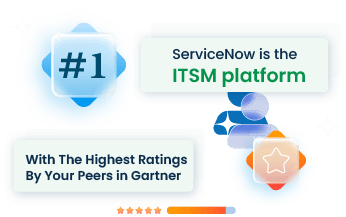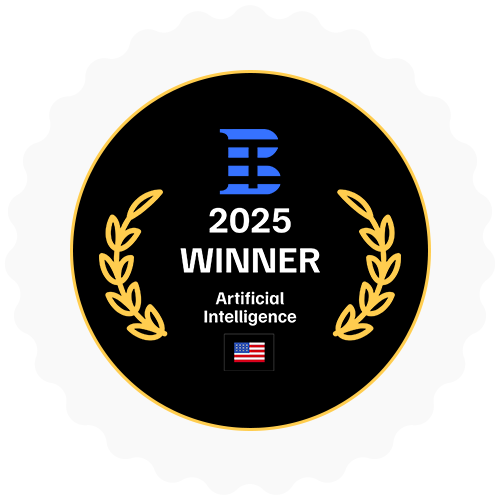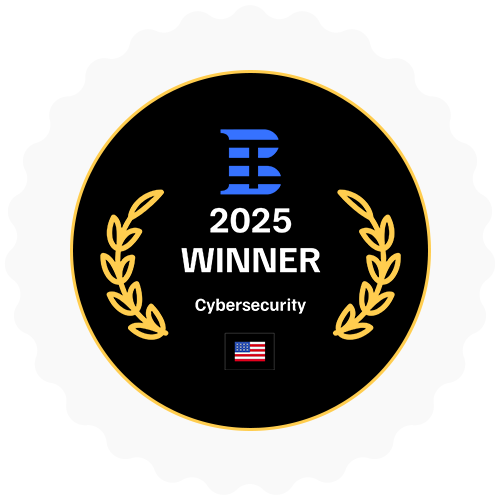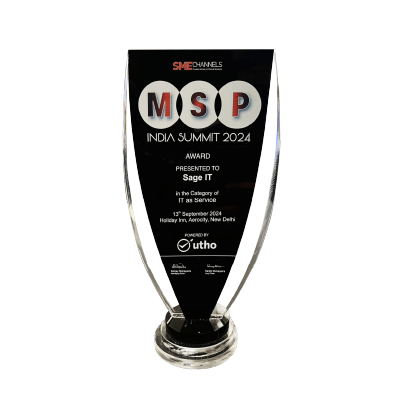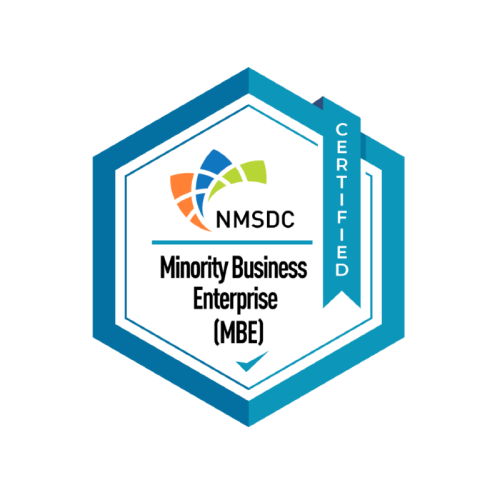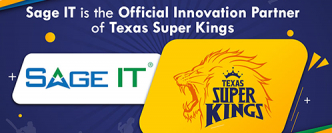“ServiceNow is a cloud platform designed to simplify and automate various business processes. Originally aimed at IT service management (ITSM), it now covers IT operations, human resources, customer service, and security operations. Its core, the Now Platform, integrates with existing systems, offering a unified approach to managing workflows and data.
ServiceNow adapts to diverse industry needs, from healthcare to finance. With AI and machine learning, it predicts and resolves issues proactively. Its modular structure allows businesses to scale and customize solutions, making it essential for digital transformation.
As a cloud-based workflow automation platform, ServiceNow enhances operational processes by automating routine tasks. This reduces manual effort and minimizes errors. The platform supports a wide range of workflows, from IT service requests to HR onboarding and customer support cases. Its flexible architecture tailors to the specific needs of any organization, streamlining and automating all processes.
How Does ServiceNow Work?
ServiceNow platform provides a unified suite of applications that support various enterprise functions.
1. Core Architecture
ServiceNow is built on a multi-instance architecture. Each customer receives their own instance, ensuring data isolation and security. This architecture also allows for tailored configurations without affecting the underlying system’s integrity.
2. Database and Data Model
The platform employs a relational database to store data. Its data model is highly flexible, allowing for custom tables and fields to accommodate unique business needs. The Common Service Data Model (CSDM) standardizes data structures, promoting consistency across applications.
3. Application and Module Framework
ServiceNow applications are modular, meaning they can be added or removed based on organizational requirements.
- IT Service Management (ITSM): Manages IT services, incidents, and problems.
- IT Operations Management (ITOM): Monitors and manages infrastructure operations.
- Customer Service Management (CSM): Enhances customer service interactions.
- HR Service Delivery (HRSD): Automates HR processes and workflows.
- Security Operations (SecOps): Manages and responds to security incidents.
4. Workflow and Automation Engine
At the heart of ServiceNow is its workflow engine, which automates routine tasks and processes. Users can design workflows using a visual drag-and-drop interface. Business rules and script includes allow for advanced customizations, ensuring processes align with specific business logic.
5. Integration Capabilities
ServiceNow integrates seamlessly with other systems through its Integration Hub. This hub provides pre-built connectors and APIs, facilitating data exchange and synchronization across different platforms. The REST and SOAP APIs are particularly useful for custom integrations.
6. User Interface and Experience
The platform offers a user-friendly interface, enabling users to navigate and use applications with minimal training. The Service Portal allows for the creation of customized dashboards and self-service portals, improving user interaction and satisfaction.
7. Reporting and Analytics
ServiceNow includes robust reporting and analytics capabilities. Performance Analytics enables real-time insights and historical data analysis, helping organizations make informed decisions. Dashboards and visualizations present data in an easy-to-understand format.
8. Security and Compliance
Security is a top priority for ServiceNow. The platform includes features such as role-based access control (RBAC), encryption, and audit logs to ensure data protection and compliance with industry standards.
9. Development and Customization
Developers can create and customize applications using ServiceNow Studio. This integrated development environment supports various programming languages, including JavaScript, for scripting and automation.
10. Deployment and Upgrades
ServiceNow provides a streamlined update and upgrade process, ensuring that instances remain current with the latest features and security patches. This process is designed to minimize downtime and disruption.
Features of ServiceNow
ServiceNow offers a robust set of features designed to streamline operations and improve efficiency across organizations.
1. Unified Platform:
ServiceNow provides a unified platform where organizations can manage IT services, operations, and business functions from a single interface. This integration facilitates seamless communication and collaboration across departments.
2. AI-Powered Insights:
ServiceNow utilizes AI-powered analytics to provide actionable insights into operational performance and trends. This empowers decision-makers to make informed, data-driven decisions swiftly.
3. Customer and Employee Workflows:
ServiceNow extends its automation capabilities to customer and employee workflows, enhancing user experience with self-service options and personalized service delivery.
4. Integration Hub:
The Integration Hub facilitates seamless integration with third-party applications and systems, ensuring interoperability and smooth data flow throughout the organization.
5. Scalability and Flexibility:
Designed to scale with business growth and adapt to changing organizational needs, ServiceNow offers flexibility to customize workflows and applications as required.
6. Real-Time Collaboration:
ServiceNow promotes real-time collaboration among teams through features like chat integrations and task assignments, fostering cross-functional teamwork.
ServiceNow Products
ServiceNow offers a robust suite of enterprise management solutions designed to boost productivity across various business functions.
IT Service Management (ITSM)
ITSM forms the backbone of ServiceNow’s offerings, providing a structured approach to managing IT services. It enables organizations to align IT services with business needs through incident, problem, change, and service request management. ITSM confirms operational efficiency and improves service delivery by automating workflows and fostering collaboration.
IT Business Management (ITBM)
ITBM empowers organizations with tools to plan, budget, and forecast IT investments effectively. It includes capabilities for project and portfolio management, financial planning, and resource optimization. By providing real-time insights into IT costs and performance, ITBM helps stakeholders make informed decisions and drive strategic initiatives.
Customer Service Management (CSM)
CSM transforms customer service operations by integrating workflows across departments. It enables personalized service experiences through case management, self-service portals, and omnichannel support capabilities. CSM improves customer satisfaction by resolving issues quickly and improving service agent productivity.
IT Operations Management (ITOM)
ITOM ensures the reliability and performance of IT infrastructure by consolidating management tasks into a single platform. It includes capabilities for service mapping, event management, and cloud orchestration. ITOM reduces downtime and enhances service availability through proactive monitoring and automated remediation.
Software Asset Management (SAM)
SAM optimizes software license usage and expenditure by providing visibility into software assets throughout their lifecycle. It helps organizations manage software compliance, reduce risks associated with audits, and control costs by eliminating redundancies and optimizing license allocations.
HR Service Delivery (HRSD)
HRSD simplifies and automates HR processes to enhance employee experiences. It includes features for employee self-service, case management, and onboarding/offboarding workflows. HRSD improves HR service delivery efficiency and empowers employees with seamless access to HR services and information.
Security Operations (SecOps)
SecOps integrates security and IT operations to respond to security incidents swiftly and effectively. It consolidates security data across IT environments, automates threat detection and response, and enhances visibility into security posture. SecOps ensures proactive security management and mitigates risks associated with cyber threats.
Governance, Risk, and Compliance (GRC)
GRC enables organizations to manage risk, ensure compliance with regulations, and align business operations with strategic objectives. It includes capabilities for policy and compliance management, risk assessment, and audit workflows. GRC improves transparency, accountability, and risk mitigation strategies across the organization.
Automation Engine
The Automation Engine drives digital transformation by automating routine tasks and workflows across the enterprise. It empowers organizations to achieve operational agility, reduce manual efforts, and accelerate time-to-value for business initiatives. The Automation Engine supports custom automation scenarios tailored to specific business needs.
App Engine
The App Engine provides a low-code development environment for creating custom applications on the Now Platform. It enables rapid application development and deployment without extensive coding knowledge, allowing organizations to innovate and address unique business requirements efficiently.
ServiceNow: Industry-Specific Solutions
- Education: Manages administrative tasks like enrollment management and student services with seamless operations.
- Energy and Utilities: Monitors critical infrastructure in real-time with robust ITOM capabilities for uninterrupted service delivery.
- Financial Services: Optimizes project management and resource allocation with ITBM solutions for enhanced profitability.
- Government: Maintains compliance and mitigates risks effectively with GRC modules tailored for public sector needs.
- Healthcare: Manages complex HR processes and improves patient care outcomes with HRSD solutions.
- Logistics: Enhances customer satisfaction through efficient service delivery using CSM capabilities.
- Manufacturing: Ensures uninterrupted production with streamlined IT service management via ITSM solutions.
- Retail: Delivers personalized customer experiences efficiently through automation capabilities.
- Service Providers: Manages end-to-end service operations to enhance service quality and operational efficiency.
- Telecommunications, Media, and Technology: Safeguards sensitive data and ensures business continuity with robust SecOps capabilities.
ServiceNow Integrations
Integration Capabilities: ServiceNow excels in integrating seamlessly with diverse systems and applications critical to enterprise operations. Its APIs facilitate bi-directional data exchange, ensuring synchronized workflows across platforms like ERP, CRM, and HRIS. The platform’s Event Management consolidates alerts from integrated tools for unified incident response.
Integration Hub: The Integration Hub serves as ServiceNow’s command center for integration operations. It offers pre-built connectors and reusable templates for rapid integration deployment. Users can create custom integrations using low-code tools, simplifying complex workflows without extensive coding knowledge. Flow Designer automates integration processes with visual workflows, enhancing operational efficiency and reducing manual intervention.
When considering ServiceNow pricing, understanding the models and their value for your business is crucial. ServiceNow offers subscription-based pricing tailored to meet various organizational needs. The pricing structure varies based on the modules and services chosen, typically scaling with the size and complexity of deployments.
Pricing Models
ServiceNow operates on a per-user, per-month pricing model. This means you pay a set fee for each user accessing the platform within your organization. Costs can also include initial setup fees and customization charges, depending on your specific requirements. Enterprise agreements are available for larger deployments, offering flexibility and potential cost savings for comprehensive implementations.
Value for Money
ServiceNow provides robust tools for IT service management (ITSM), customer service management (CSM), HR service delivery (HRSD), and more, all integrated into a single platform. This consolidation reduces operational costs and complexity while improving workflows and productivity. Organizations benefit from better ROI, using ServiceNow’s capabilities to automate processes, improve user experiences, and increase overall output.
So What You Can Do Now?
ServiceNow provides enterprise solutions for IT, HR, customer service, and more. By automating routine tasks and centralizing operations, ServiceNow boosts productivity and improves operational processes.
How to Implement ServiceNow for Your Business Success?
- Identify Key Workflows: Evaluate your current processes to find areas where automation can provide the most impact.
- Use ServiceNow Products: Implement specific ServiceNow products tailored to your business needs, such as ITSM, CSM, and HRSD.
- Monitor and Adjust: Regularly review the performance of your workflows and make adjustments to ensure continuous improvement.
Ready to improve your business operations? Contact our ServiceNow consulting services today for personalized guidance and support. Our experts will help you utilize the full potential of ServiceNow, tailored to your unique requirements.


